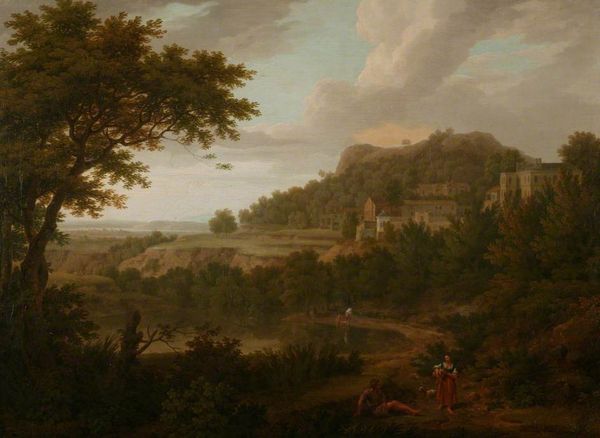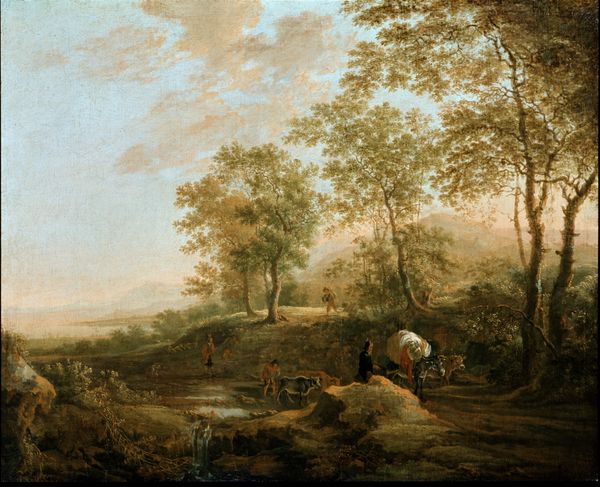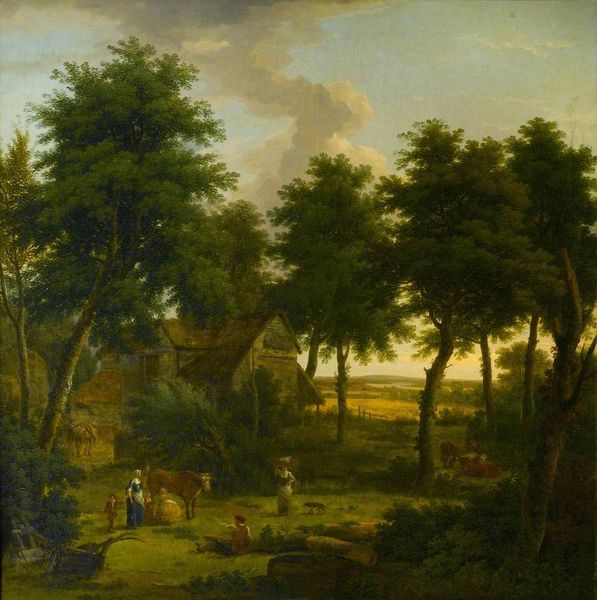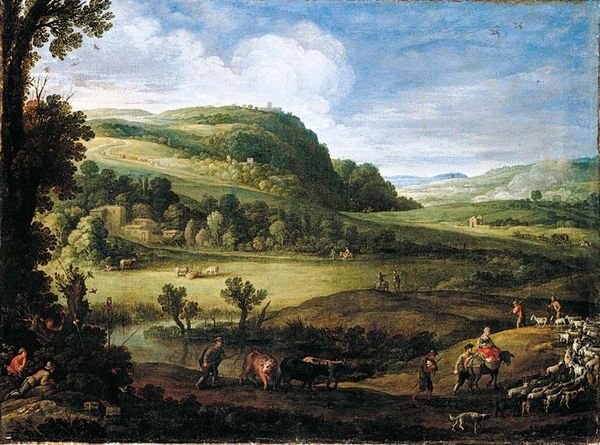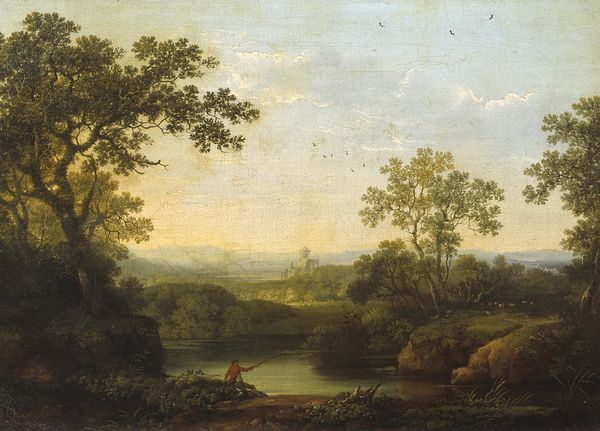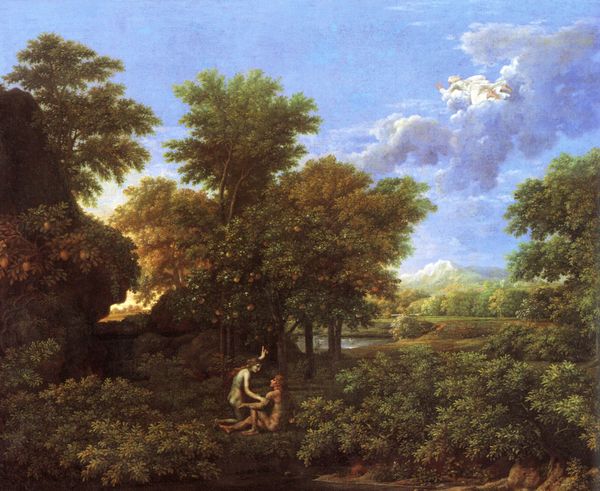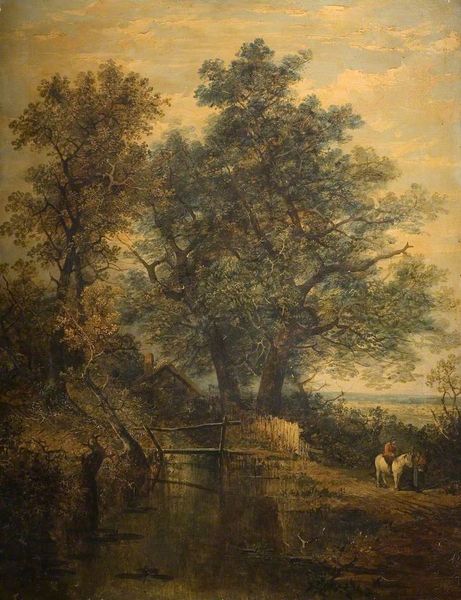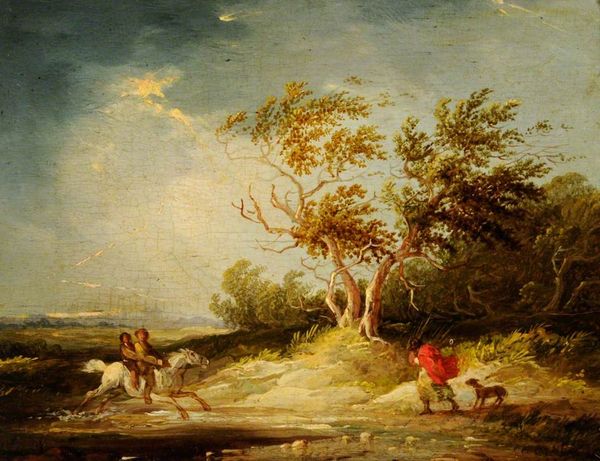
painting, oil-paint
#
painting
#
oil-paint
#
landscape
#
cityscape
#
genre-painting
#
rococo
Copyright: Public domain
George Lambert painted this "View of Copped Hall in Essex, from the Park" sometime before 1765. Dominating the horizon, the architecture of Copped Hall speaks of man's dominion over nature. The building, solid and geometric, stands in contrast to the wildness surrounding it. Look at how the trees frame the scene, their branches reaching like arms—an ancient motif seen as far back as the murals of Pompeii, where nature was often depicted as both a refuge and a reminder of mortality. The figures in the foreground, enjoying a leisurely picnic, are participating in a pastoral ideal. However, this image is not just a peaceful scene. It represents a carefully constructed view of landed gentry. The Hall itself, a symbol of power and wealth, overlooks the landscape, much like a watchful eye. This compositional choice connects the painting to a long tradition of landscape art, where the land is not just scenery but also a statement of ownership and control. These symbols aren't static; they evolve. The pastoral scene, while seemingly timeless, carries the weight of historical context. The image of leisure and harmony can also suggest an unconscious desire for an idyllic past. Through art, the past continually resurfaces, transformed but never truly gone.
Comments
No comments
Be the first to comment and join the conversation on the ultimate creative platform.

